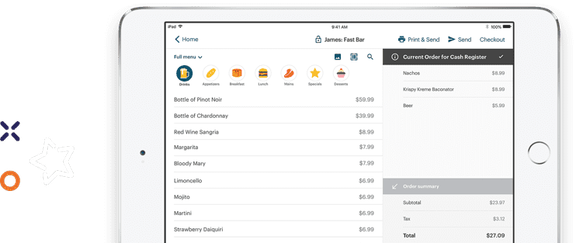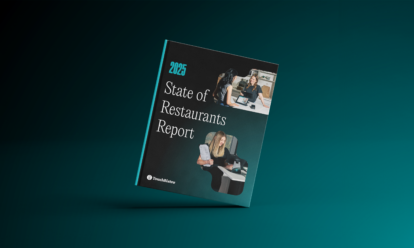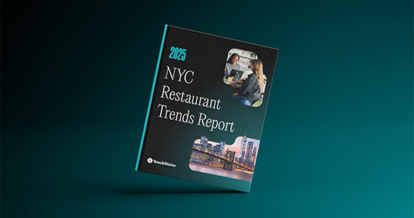The restaurant industry has been completely turned on its head, with restaurateurs facing circumstances they have never seen before. And as restaurant owners try to figure out how to run a business during a pandemic, they’re also helping their teams navigate the crisis, getting creative to support staff through COVID-19.
Does this just mean throwing money at them? You may not be able to afford that on a good day. So how else can you support staff right now?
Don’t worry, the answer isn’t just payouts. Here are some of the ways restaurants are supporting staff throughout COVID-19 – and how you can implement it at your business.
Paying Staff for Lost Hours
What It Looks Like
Every restaurant is dealing with COVID-19 differently, but some owners are choosing to pay employees for lost labor due to closed doors or limited hours.
One example of this practice is &pizza, a fast casual in Washington, D.C. They expanded their healthcare policy to cover all new staff, upped their hourly wage for staff still working, gave free unlimited pizza for staff and immediate employees, teamed up with Lyft to give their team credits towards rides to and from work, and provided paid leave for any employees that lost hours.
But don’t think this is the norm – it isn’t. Even if you can only afford to do some of that to help support staff, a little will go a long way.
How You Can Do It
Before you commit to anything, check your finances. It may seem helpful to promise these grand gestures to your team to help make them feel better, but it’s not going to help you or them long term to just empty your bank account. Make sure you can still take care of yourself – you can’t pour from an empty glass.
Once you know your financial situation and that you can afford to do this, make a realistic plan. Before you announce anything, you’ll need to figure out:
- How long you’ll be compensating employees: Two weeks? A month? Give staff the heads up so they can prepare.
- How much you can compensate employees: Are you able to do 50%, 75%, or 100% of their normal wages? A different number? Be transparent about what they can expect.
Remember, there is NO shame in not going this route. It’s expensive and not always sustainable – a lot of businesses simply cannot afford this on a normal day, let alone in today’s climate.
Preparing Meals for Impacted Workers
What It Looks Like
Restaurants may have food going to waste because of closures – but it doesn’t have to spoil.
Some local restaurants are taking care of not just their staff but other industry workers who have been impacted by layoffs and cut hours. They’re making the most of unused inventory and empty kitchens to whip up free meals to give to people struggling financially right now.
Common Stock, a restaurant in San Diego, has a program in place where they give people in the area who have lost their job because of COVID-19 one free meal per day, based completely on the honor system. For people who don’t want to come in and ask outright, they even share a “passphrase” on their Instagram – the latest one was “I’m in a glass case of emotion.” Use the secret password at the counter and staff will know to provide you with a free meal – no questions asked.
They also implemented a practice through their delivery service where anybody placing an order can opt to donate a meal – the price will be added to their bill, and the meal will be prepared by the restaurant and given to somebody in need.
How You Can Do It
First, you’ll want to take a look at your inventory and ask yourself if you’re doing this just to get through your current inventory, or if you can order more to continue this level of support. Your answer will determine what you say about your offering and how you do it. You may only have enough inventory to provide meals for a few weeks.
Next, determine who you want to do this for – it’s not realistic to provide meals for everybody. Consider starting with your own team, the ones directly impacted by fewer hours or closed dining rooms, then move to other people in the industry if you feel you can.
Once you know how many meals you can produce and for whom, you’ll want to share your offering. Depending on who you’re offering meals, your method of sharing may change – whether it’s by telling your team to spread the message through word of mouth, sharing through your email database, or posting on social media. Just make sure all of your messaging is extremely clear in who you are able to provide meals for. You want to avoid disappointment if people see this and come to you.
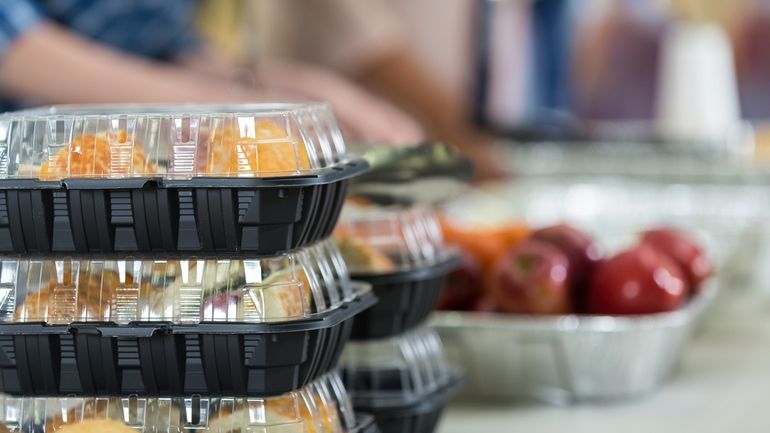
Pivoting Operations to Keep Doors Open – and People Employed
What It Looks Like
As people start taking social distancing more and more seriously, we’re seeing less and less physical traffic at restaurants. Lunch rushes have essentially come to a complete halt, dining rooms are closed, and morning coffee runs have dwindled.
Businesses across North America are taking this as a sign to change up their operations – at least for the time being – as a way to keep their doors open and their team in jobs. It’s a great way to support your team while trying to minimize the long-term financial impact of COVID-19. Businesses that are typically dine-in are working to pivot their operations to more takeout and delivery, while the option is still available.
Mexicue, a New York-based Mexican restaurant, is a great example of this. They were worried about becoming dependent on takeout and delivery during this crisis, since upwards of 90% of sales used to come from dine-in customers. But they already had plans to launch an in-house delivery program later in March, so they accelerated that launch and pivoted quickly to become a business centered around delivery.
To optimize their offering, Mexicue upped their delivery range and offered margaritas with delivery – and saw their takeout and delivery orders jump from 19 to 300 in just a week! Making these changes went a long way to helping take care of their team, because they got to hire back some of their laid-off staff to help with the increase in delivery.
How You Can Do It
Whether it’s by focusing your efforts on takeout and delivery or changing your menu to create packaged meals, see how these pivots can incorporate your current team to keep them financially supported.
If you decide to implement delivery, see if any of your front of house team members want to take a stab at delivery driving (just be sure to check with insurance providers about coverage). If you start offering meal prep kits, see if you can cross-train staff so their skills can be used in this new area.
Having open conversations with staff about these potential new roles or responsibilities will show them they’re supported and that all the business choices you make have them in mind.
Implementing Practices to Limit Contact
What It Looks Like
Supporting staff is about more than raises and free meals – it’s about creating a workplace where your team feels safe every day.
Any practices that you can implement to make them feel safer is a great – and free! – way to show your team they are supported. With the emphasis on social distancing and isolation right now, limiting contact between your team and diners is a great way to do just that. This is also super important to consider when you’re pivoting operations. You’ll still want to keep your staff feeling safe with any changes you make.
Restaurants across North America are doing this in different ways. Some are choosing to close their dining rooms – if they haven’t been shut down by government mandates. Some coffee shops are doing all business exclusively through the drive-thru window (if they have them) or letting people walk in to pick up and then leave right away. Stores are even limiting the number of people allowed in the storefront. There is also a huge emphasis on takeout and delivery practices that encourage limited contact.
Pizza Pizza, for example, made contactless delivery a significant part of their delivery services. When placing their order, diners can select “Contactless Delivery” or “Leave on Doorstep,” completely removing any reason for staff to interact directly with extra people.
How You Can Do It
Chances are dining rooms have been shut down in your area. Consider closing them down if they have not. Even if just for picking up a cup of coffee or takeout meal, you could also limit the number of guests allowed in your venue at any time to minimize contact.
You can also switch up your takeout and delivery practices, implementing curbside pick-up or contactless delivery. These types of arrangements help keep both your staff and your customers safe. However your diners are placing takeout and delivery orders – by phone, website, or third-party app – make sure to implement a system that either informs them about your contactless system or asks them to input their preferences (if there are choices available).
If you don’t have online ordering set up, now may be the time. It helps your staff accept more orders, while helping customers keep their distance. You can either opt for third-party takeout and delivery apps like Uber Eats and DoorDash, or offer ordering directly on your website with a system like TouchBistro’s Online Ordering. Keep in mind that third-party apps offer convenience but at price (sometimes up to 30% of the order total), while your own online ordering could let you keep 100% of the profits but requires your own pickup and delivery processes to be in place..
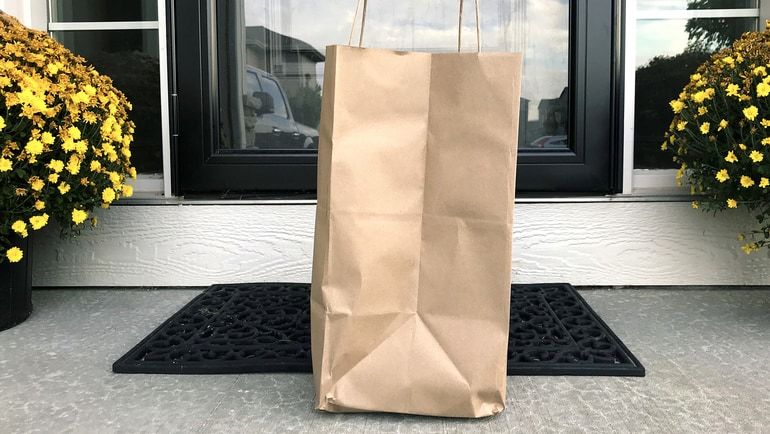
Communicating Openly
What It Looks Like
Whatever of the above options you choose will mean a lot to your team – they want to feel supported. But your team needs to know what you’ve decided to do today, tomorrow, and into the future.
The key to this is communicating openly – and regularly. This may seem almost too simple, but think about it. If your gut instinct is to protect your team from what’s going on, you might not give them the full picture of what’s happening. But while they don’t need to know every detail, it’s important to keep them informed.
Depending on your concept and the rules put in place by your local government (some cities have banned gatherings over a certain size), you’ll have to adjust what this looks like for your business. It can range from in-person team meetings (again, if allowed) to video meetings, phone calls, or emails.
How You Can Do It
Implement a communications plan at your restaurant to ensure you’re communicating the right information to your team, at the right time. As things shift, you’ll want to be as open as possible with your team – within reason. Set expectations early on about when they’ll hear from you and how.
When you have a plan in place, it’ll be easier to know exactly how to share new information with your team each time something changes – which, let’s face it, has been often. It will also help alleviate some of the stress of trying to keep everybody up-to-date on a topic that changes hourly.
Letting People Go to Apply for Unemployment Benefits
What It Looks Like
While this may seem like the worst case scenario, a lot of restaurant owners are strategically choosing to let their team go as a way to look out for them.
Sandra Schilling Holl, the owner of Chicago-based bakery Floriole, decided to lay off her entire team, rather than just scaling back their hours, for two reasons. First, she didn’t want to feel like she was contributing to the spread of the disease by keeping staff at work and customers coming into the bakery. Second, she wanted to let her staff apply for unemployment, which they wouldn’t be able to do while still on her payroll.
Her team could actually receive more money on unemployment then she could offer them with limited hours.
How You Can Do It
If this is your choice, give your team as much advance notice as possible. It may be tricky with how fast things are changing, but any heads-up you can provide will help your staff prepare for their next steps.
Also, explain to your team why you’re doing this – none of this is their fault. Instead, it may be for their own good. If you slash hours as a way to keep your restaurant open, your staff still might be earning less than what they could by applying for unemployment compensation.
Below you can find resources for unemployment benefits to help arm your team if this happens:
- Government of United States – Applying for Unemployment Benefits
- Government of Canada – Coronavirus (COVID-19) – Benefits and Services

Every restaurateur is in a tough spot. As a business owner, you have a whole team looking to you for answers. And when you opened your doors, this definitely wasn’t something you anticipated.
But you don’t need to have all the answers. All you can really do is try your best and take it day by day. Remember, you can’t support your team without first taking care of yourself. And whatever actions you can take to show your support will go a long way.
In the meantime, we want to help by arming you with the knowledge you need to get through this. Email us at [email protected] if there are any resources we can offer to help. You can see our existing COVID-19 resources here.


